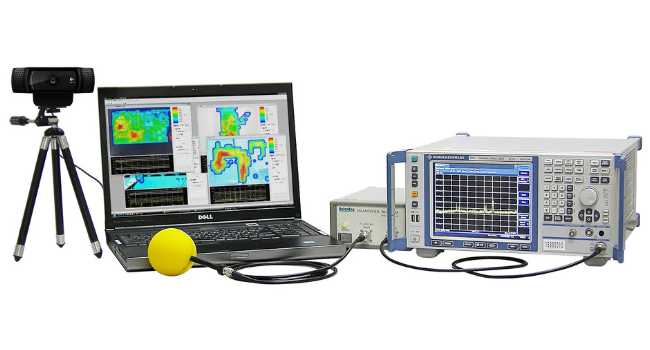This document provides step-by-step instructions on using the Rigol DSA-800 series of Spectrum Analysers to measure the characteristics of an RF Bandpass filter.
NOTE: The DSA must have a Tracking Generator to effectively perform the following test.
Normalize the trace (Optional)
Many elements in an RF signal path can have nonlinear characteristics. In many cases, these nonlinear effects on your base measurements can be minimized by normalizing the instrument.
1. Connect tracking generator output to RF input using the same cabling that you will be using to test your device. Any element, like an adapter, used during normalization should also be used during device measurement as any changes to the RF signal path could effect the accuracy of the measurement.
2. Enable the tracking generator by pressing the TG button > TG On
3. Store the reference trace by pressing the TG button > Normalize > Stor Ref
4. Enable normalization by pressing the TG button > Normalize > Normalize On
Measure the filter
1. Connect the tracking generator output to the filter input using the appropriate cabling and connectors.
2. Connect the filter output to the instrument RF input.
3. Set the tracking generator amplitude by pressing the TG button and the TG Amplitude. You can use the keypad or wheel to enter the correct value.
NOTE: If your instrument is equipped with a Preamplifier, you can enable it to lower the displayed noise floor by pressing the following sequence:
Amplitude button > Down Arrow > RF Preamp On
4. Enable the Tracking generator by pressing the TG button > RF Source ON You can see the small bump in the figure below.
Figure 1: Before Auto.
5. You can use the Auto button to center and zoom on the waveform. You can also use the Freq and Span buttons to manually manipulate the displayed data.
Figure 2: After Auto.
6. You can now enable the Marker function to measure the bandwidth and attenuation or passband characteristics of the filter.
7. Press Marker Fctn > N dB BW and set the function to the amplitude of interest. In this example, we are measuring the 3dB Bandwidth of our filter.

































































































 FREE SHIPPING £75+
FREE SHIPPING £75+
 CELEBRATING 50+ YEARS
CELEBRATING 50+ YEARS
 PRICE MATCH GUARANTEE
PRICE MATCH GUARANTEE




